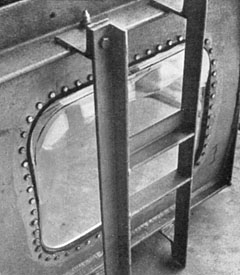

Tragedies
Early jets were prone to ground-stall, which was covered in documentation and training. The pilots were blamed for the accidents, but this was hardly satisfactory. One of the DH-108 prototypes had been used to test retractable slats, but it would be years before they were reliable. An interim solution was to give the leading edge of the wing a slight droop. Cunningham demonstrated that a fully-laden Comet with this modification could take off while dragging the tail on the ground, making a ground stall practically impossible.
On 2 May 1953, BOAC Comet G-ALYV was destroyed near Calcutta during a storm. It caused immediate concern, but accident investigators concluded that the severity of the storm had been violent enough to be the cause. It was a tragedy, but, in the context of air-safety at the time, it did not diminish either public enthusiasm for the Comet, or operators’ willingness to place orders.
On 10 January 1954, a BOAC Comet, G-ALYP, vanished off the coast of Elba. Conditions were perfect; it could only have been a catastrophic failure. All Comets were grounded.
Charles Abell, BOAC deputy operations director, led an investigation. The suspicion was that one of the new technologies had failed: either the engines, hydraulics or pressurisation. With the wreckage in deep water, Abell concluded that engine failure was the most likely cause. 60 precautionary measures were carried out on all aircraft, and flying resumed on 23rd March.
On 8th April, G-ALYY exploded near Naples. All Comets were grounded at once, the certificate of airworthiness was withdrawn, and production stopped. On 21 April 1954, the engines from G-ALYP were recovered, at last. My father, who was working for the Engine Company at the time, remembers the dreadful suspense as they waited till the small hours for the crates to arrive. It didn't take long to find they had been working perfectly when "Yoke Peter" broke up ...
A public inquiry was opened, and Sir Arnold Hall, Director of the RAE, was called to investigate the root cause of the accidents.
